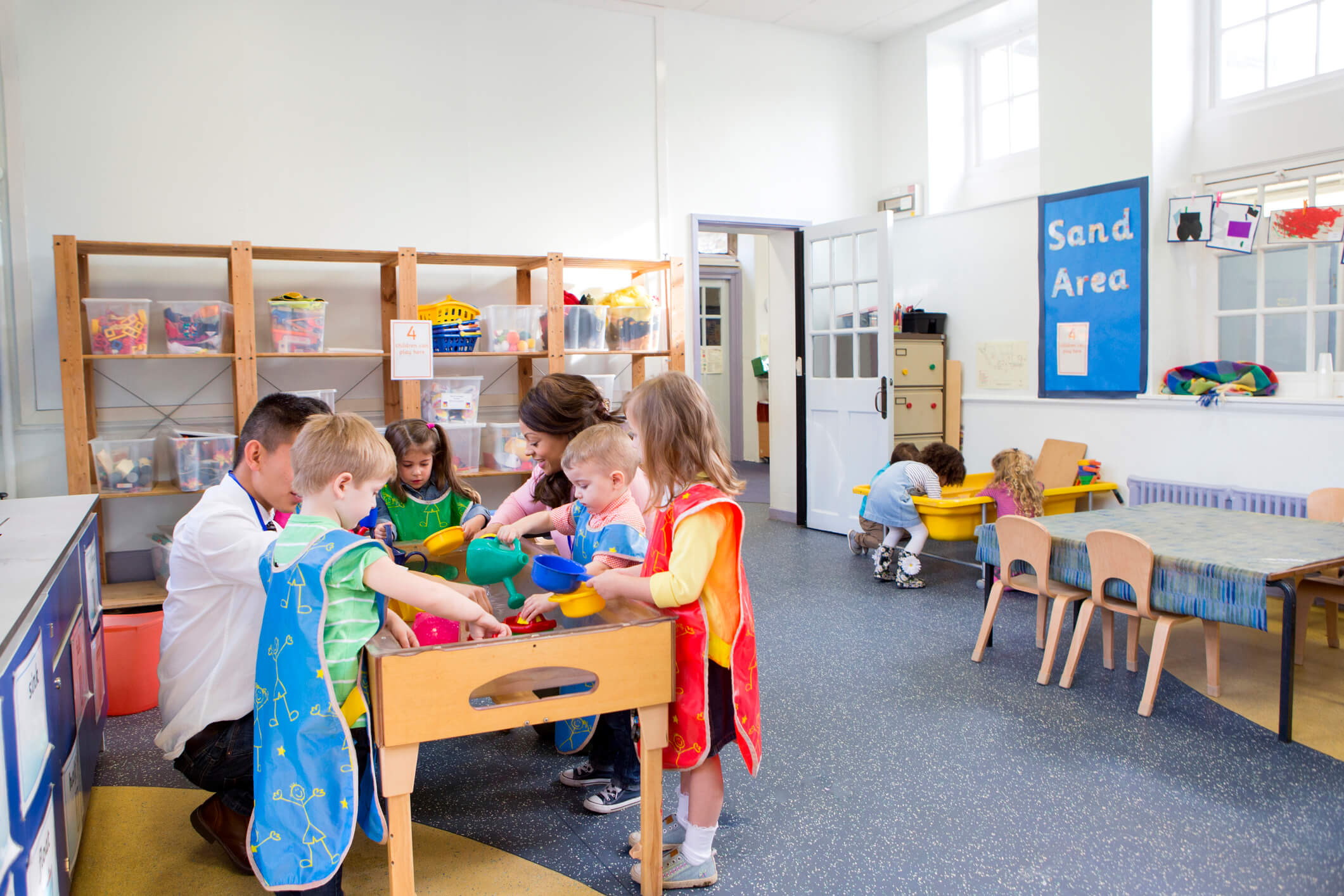Activities that directly or indirectly involve the use of any or all of the five senses – sight, hearing, taste, touch and smell – are a pivotal aspect of children’s development. Sensory learning supports critical elements of brain development, strengthening nerve connections and preparing the brain to handle complex cognitive tasks. Keep reading to find out more about the incredible benefits of sand and water play for preschool children.
Boosts Cognitive Development
Asking questions, thinking about and experimenting with the way the world works and then breaking down the results is a key process that supports a child’s cognitive development. These are the fundamental processes that feed into developing general understanding and problem-solving skills.
Research has proven that sensory play strengthens the nerve connections in children’s brains, setting up the foundations for stronger memory skills, pattern recognition and sorting, and other complex cognitive mental functions. In this way, sensory play is key for setting a child up for success later on as they go on to undertake more complex tasks as they grow up.
Supports Sensory Integration
Exploring a variety of sensory stimuli including different textures, smells, sounds and visuals is key to a child’s intellectual development. Building up their sensory integration is essential for processing information through senses and either forming a bodily response or filtering that information out, which plays a role in even the tiniest things you do. Examples of this include the happiness that you feel when smelling or tasting your favourite foods, or filtering out the feeling of your clothes touching your skin.
One of the major benefits of sand and water play is the easy way in which it helps to develop sensory integration. By combining multiple senses through the varied textures of sand and water and the sound and sight-based properties of both materials, a sand and water play table can have a hugely positive impact on a child’s sensory integration development.
Encourages Expressiveness & Communication
By taking part in sensory learning with siblings or classmates, a child will begin to develop social skills. Having to communicate with others, accommodate another’s style of play and solve problems as part of a group is a great way to prompt the development of key skills in a social context.
Exposure to this social environment also encourages the development of vocabulary skills, giving the child an overall better command of their language. The plentiful opportunities for verbal communication accommodate this and also allow them to generally share ideas and values with others, and develop the building blocks that will go towards constructing their overall character in a social environment.
Fosters Emotional Regulation
The benefits of sand and water play also include the development of a child’s emotional regulation. Sensory stimuli have a calming effect that is key to developing the emotional stability of a child and their ability to regulate their mental state. This calming effect can have a significant impact on children experiencing either hyperactivity or sluggishness, bringing these opposite ends of the emotional spectrum into a more neutral space.
The safe environment provided by a sensory play area is invaluable in promoting this emotional regulation and can give a child an important retreat when faced with a challenging situation. This can be especially important for children who have certain disorders such as ASD or ADHD, and will typically find more challenges in certain situations than other children.
Strengthens Fine & Gross Motor Skills
Making use of certain muscle groups in sensory learning activities helps children to develop their fine and gross motor skills. As they interact with sensory items such as sand or water, they develop and strengthen their small muscles, fine-tuning these areas and overall improving their dexterity and strength. The primary group focussed on here are the muscles within the fingers and hands.
Larger muscles are also strengthened. Crawling, running, and climbing can all be part of a sensory play experience and will develop muscles within the legs, arms, feet and torso. Developing these motor skills is a key aspect of a child’s muscular development.
Stimulates Creativity & Curiosity
Last but not least on our list of the benefits of sand and water play is the creativity and curiosity that it can inspire in children. Sensory play is great for encouraging exploration and experimentation with ideas, allowing children to begin to ask their own questions and discover the answers on their own. This sense of wonder and curiosity about being presented with something with so many possibilities is key to developing their creativity.
With a limitless toolset like sand and water, there are plenty of creative ways to play that children can explore – building sand castles, writing in the sand, and making use of the water to create rivers in the sand. The opportunities for creative play are limitless, and one of the key benefits of a sand and water play table.
Hopefully this blog has been helpful in explaining the benefits of sand and water play in young children’s development. You can take a look at our awesome range of sensory play equipment here, or if you need any assistance from the pros don’t hesitate to get in touch with our expert team here. Struggling for sand and water activity ideas. Click here to look at Twinkl’s ideas and thought.

